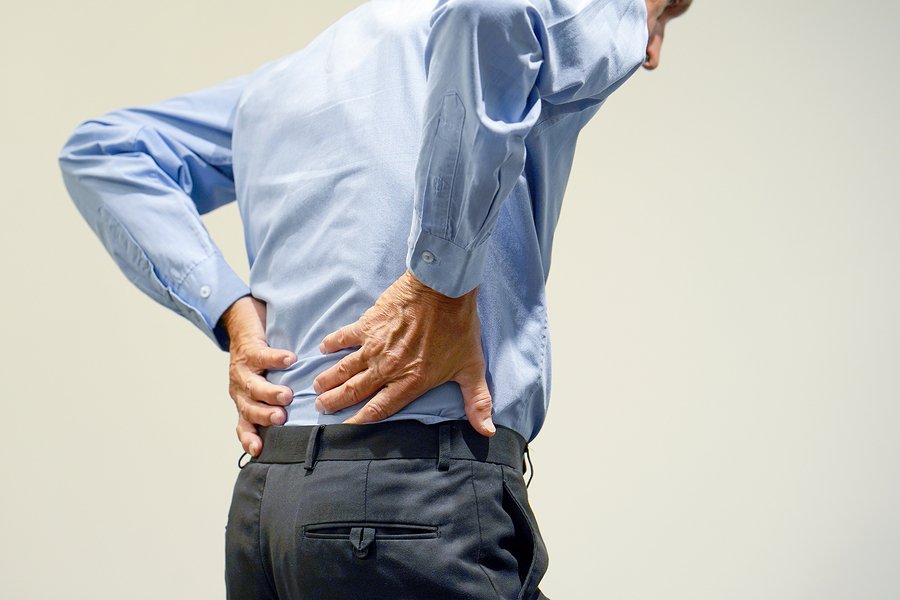
How to maintain good posture when using a standing desk
Sore legs. Aching back. Tense neck.
We’ve all been there. Nope, we haven’t just ran a marathon or sweated through a 45-minute high-intesity gym class.
No, not at all. So what have we done?
Sat through yet another work day.
Good posture, especially when sitting at a desk for up to 8-10 hours a day, is essential to maintaining comfort and health.
You might think it’s impossible to avoid sitting when you have a standard desk job, but the reality is, our bodies were not designed to sit for long, continous periods of time!
This is when the combination of sitting and standing is highly encouraged through the use of standing desks.
Constantly switching between sitting and standing alleviates the strain placed on your lower back, improves your posture, and can protect you from work-related injuries.
Achieve great results in your physical and psychological health when you practice good posture – even at your standing desk!
Maintain good posture using standing desks
People who prioritise good posture in the workplace enjoy decreased instances of muscle strain as well as reduced lower back and hip pain.
Good posture – while both sitting and standing – ensures your body uses its muscles effectively, without causing undue strain or stress.
Positioning your body correctly also keeps the bones and joints in correct alignment so that every part of the muscle is used correctly.
Bad posture does more than cause pain. It can also contribute to:
- Poor blood circulation
- Arthritis
- Poor mood and focus
- Breathing efficacy
- Body fatigue
As we hope you understand, poor posture can have many short- and long-term effects on your health.
The best thing you can do is arm yourself with the right information and employ the best techniques to improve your posture, protect your body, and maintain overall health.
Ensure your monitor is at the right level
The urge to slouch starts when your desk (standing or seated) and monitor are not aligned correctly.
If your monitor is placed too high, you will strain your neck, even by ever-so-slightly lifting it to better see your screen.
Too low, and your head will naturally fall forward, leading to shoulder and upper back strains.
Your monitor
The monitor should be around 20 inches or 50cm from your eyes – that’s about arm’s length distance. Are you in front of your computer right now, reading this blog?
If so, reach your arms out and see if the tips of your fingers hit your screen. If not, try moving your monitor slightly closer; the opposite if you can’t fully extend your arms before reaching your screen.
The top of your screen should align with your eye line, so you’re not forced to look down in order to work.
Your computer mouse
Your mouse, too, should be optimally positioned, in a spot where you do not have to strain or reach far to access it.
Your keyboard
Keep your arms at a right angle when typing, resting your forearms on your desk.
The idea of using standing desks with the correct posture is not letting you tilt your neck and bend your back to move more closely to the desk that can most likely happen with too low positioned screens.
Move around – even when you’re standing!
To maintain correct posture using the standing desk, we suggest moving around as often as possible!
Simply shifting weight from one foot to the other and tapping your toes, to doing gentle calf raises ensures your body continues to pump blood.
Make sure to switch into a different position every 20 to 30 minutes possible using an alarm to remind you once in a while.
Changing your various standing position ensures you keep your body moving throughout your day, regardless of whether you are sitting or standing.
You can also do a combination of sitting and standing by using a stool: you can support your feet and legs every so often, giving yourself a temporary break from standing.
Wear the right shoes
The key to keeping your posture right is also to wear the right shoes whenever you use your standing desk.
The right footwear determines not only your comfort but your standing position, too, since weight should be distributed evenly between your feet.
Uncomfortable shoes such as heels can cause you to take on awkward standing positions, and may also discourage you from standing!
The right footwear supports your weight and offers maximum comfort.
Use a standing mat
Prolonged standing on a hard surface (such as tiles or floorboards) can lead to further pain and discomfort.
We recommend a standing mat that’s been specifically designed with sit-stand desk users in mind.
Standing on a hard surface can be uncomfortable, and can unconsciously force us into uncomfortable positions.
Ergomotion is a proud supplier of the Topo standing mat, which has been specifically designed to reduce discomfort associcated with standing on hard surfaces.
A standing mat improves comfort and helps you unlock the true benefits of standing desks!
Alternate between sitting and standing
The most important tip we can share is to consistenly alternate between sitting and standing throughout your workday.
We can’t stress this enough! Standing for long periods of time is just as bad as sitting, so strike the perfect balance by switching between sitting and standing.

Maintain good posture when using your standing desk
Making the decision to purcahse a standing desk is one important part of the equation – there’s no doubt about that.
Equally as important? Using your sit-stand desk to its full potential!
This way, you can truly reap all the great health and physical benefits associated with sitting and standing throughout the day.
Your ideal work enviroment should allow you to maintain good and correct posture, regardless of whether you’re sitting or standing.
Stand up for your health with a custom-made standing desk from Ergomotion!
Explore our sit-stand desks here, and please be in touch with us if you have any questions!
Call us today on (03) 9579 1454 or fill in our online form and we’ll get back to you soon!





